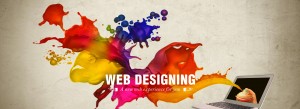Web design is an aspect of internet that starts off when there is nothing available except a simple sitemap and some lucky chaps have to start work even without a sitemap. But from years and years, hardworking and innovative lot of professionals that we know as web designer has dwindled the cyber space with their imagination and art work. Here is a list of elements of web design that act as a sacred code that must be followed by all and sundry when they sit down to design an exquisite website.
Elements of web design
Minimal design
Minimal design is the user centric design which completely emphasises on what user wants rather than feeding users with what you want them to see.
Minimalistic design concept focuses on keeping limited information on the viewer screen at any given point of time. The story should unfold as user interacts with the webpage but the screen must always look clean and not stuffed.
In modern era, users want crux of the story in a crispy manner. Use of white space, selective use of design elements, better typography, use of videos instead of writing lengthy stories, use of Webgraphics and animations etc. are all part of minimal design approach.
Consistent Theme
An important element of web design that creates much needed ambiance in your website’s user experience. Your site’s layout will vary from page to page, for example, you would typically want the homepage to be more unique and eye-catching than the interior pages, but it is important to consider the overall effect of the site’s theme. A good theme should be focused, clear and obvious, and each page should refer to it by making use of the color scheme and layout consistent. Each page should also feature images and content that is relevant to its respective topic.
Color scheme
There can be a lot of meaning behind colors. Different colors and color combinations can evoke different emotions. When choosing a color scheme for your website, think about how your colors are going to be used and where you want to draw attention. Don’t forget to picture your color choices as a part of the different elements of your website, including the background, navigation, links, and call-to-action buttons.
While you don’t have to limit yourself to your logo color or colors, you do want to use colors that complement your branding. You’ll also want to limit the number of colors you use, because too many will overwhelm the viewer and come across as chaotic.
Keep it simple
The “keep it simple”-principle (KIS) should be the primary goal of site design. Users are rarely on a site to enjoy the design; furthermore, in most cases they are looking for the information despite the design. Strive for simplicity instead of complexity.
From the visitors’ point of view, the best site design is a pure text, without any advertisements or further content blocks matching exactly the query visitors used or the content they’ve been looking for. This is one of the reasons why a user-friendly print-version of web pages is essential for good user experience.
Easy Navigation
Navigation does not need to be complicated. It should be easy to identify and easy to use. It is also important to keep navigational menus to a minimum so you don’t overwhelm users. Depending on the type of site, five to ten menu navigation items are the top end of what you should aim for.
Navigation also includes tools that help users navigate through a site. Sites with parallax scrolling, for example, often include directional arrows to make the site more user friendly. The easier it is for people to use and navigate throughout your site, the longer they are likely to interact with it.








